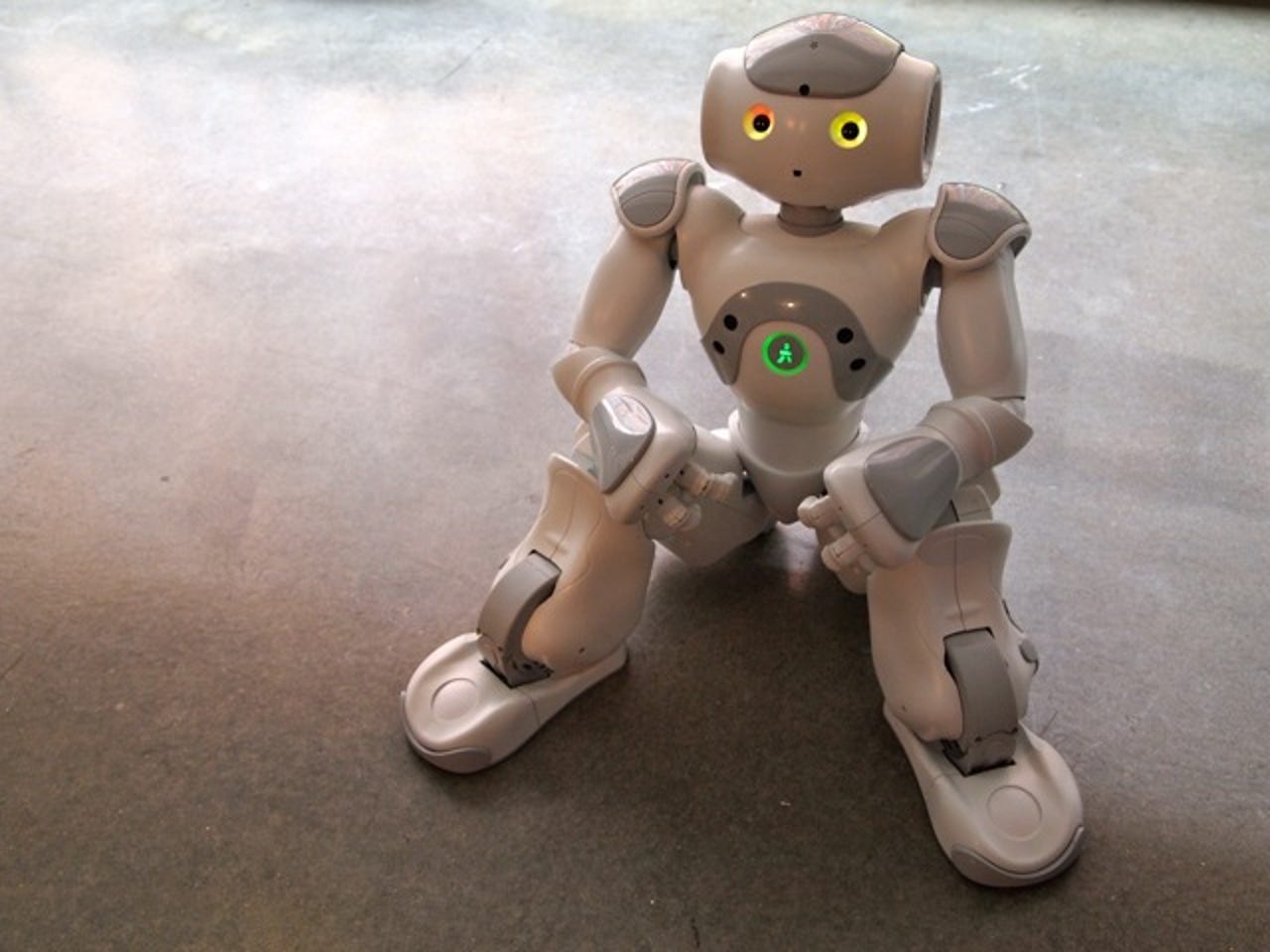Intel's annual Tech Innovation event


Developed by Aldebaran Robotics, the petite Nao robot is powered by an Intel Atom processor for educational and research purposes. With two cameras inside its little head, the Nao can see, hear, speak and commuincate with humans.
Some examples of where this device could be useful include the automobile industry, where it can be used to test reactions in different situations, as well as treating children with autism.
Brought over from Spain, the Intel Atom-powered Qbo Service Robot can also detect and recognize faces, gestures and objects in real-time.
Currently in use at a research institute in Germany, the BALLVIew application blows up complex biological molecules on a display in 3D (glasses required) for finding and improving active substances for pharmaceuticals.
Google Earth better watch out for Planet Viewer, which uses a second-generation Intel Core processor. The application renders locations around the world in higher geometric detail without additional hardware. However, a discrete graphics card is required.
Ericsson is using Intel Atom processors for the Connected Car Proof Concept program, which allows drivers to both discover and post alerts about real-time road conditions, traffic, accidents and more.
Working out at home by one's self can be quite boring, so Resondesign is trying to kick up the energy with the MayaFit virtual personal trainer program and station. Users get points and encouragement for working harder (something you can't get when working out alone), and fitness enthusiats can input what exercise materials they have at home (i.e. weights, etc.) for customizing the workout.
Another fitness option powered by Intel is the Enhanced Entertainment Treadmill from Star Trac. The machine sports at 15-inch display, integrated iPod connectivity and a USB port.
Kraft has built a self-service kiosk with a touch screen and menu - all based on Intel power. Consumers can get extra recipes, shopping suggestions and coupons. This innovative shopping experience isn't available just yet, but when it is, expect to see it in major supermarkets and stores like Safeway, Wal-Mart, and others.
Intel Wireless Display and Intel Insider work together to allow users to bring 1080p, Blu-ray and other protected video content from a computer to an HDTV using a wireless connection. Users can use other programs on the computer while watching their favorite movies on the big screen simultaneously.
Capgemini's Home Energy Management Console looks like a tablet, but it's better to think of it as a home manager or consierge service. Powered by an Intel Atom processor, the command center is full of apps that can control utility costs, activate home security messages, and provide real-time information for other basic purposes such as next bus times and tracking UPS packages. Pricing isn't official yet (nor is a release date), but expect it to fall under $400 when it does become available.
Shopping in stores is going to be a whole lot more fun with things like the adiVERSE Virtual Footwear Wall. Developed by Intel and Adidas with second-generation Core i7 processors, these walls display the inventory on HD virtual touch screens with plenty images, details and inventory information about the products.
These 3D renderings also use Intel AIM Suite and vPro technology.
Scalable Virtual Worlds makes it possible to interact with thousands of other people using avatars. Such technology is being used by the U.S. government for defense training.
Much like the adiVERSE wall, Intel's retail interactive fashion experience allows users to browse and filter inventory, and then place the items on a digital mannequin using second-gen Intel Core i7 processors and vPro technology.
Already available in Europe but not the United States just yet, the Lego Digital Box kiosk can display a 3D animation of the finished product by simply scanning the box. Not even the barcode, but the kiosk automatically recognizes the box.
Silicon Photonics uses light to communicate instead of electronics, enabling mobile devices to sync up 100 to 1,000 times faster than current methods. Theoretically, you could transfer 1,000 HD photos or an HD movie in under a second with the power of these devices. Intel is still working on bringing down the costs and sizes of this advanced technology before it hits the consumer market.